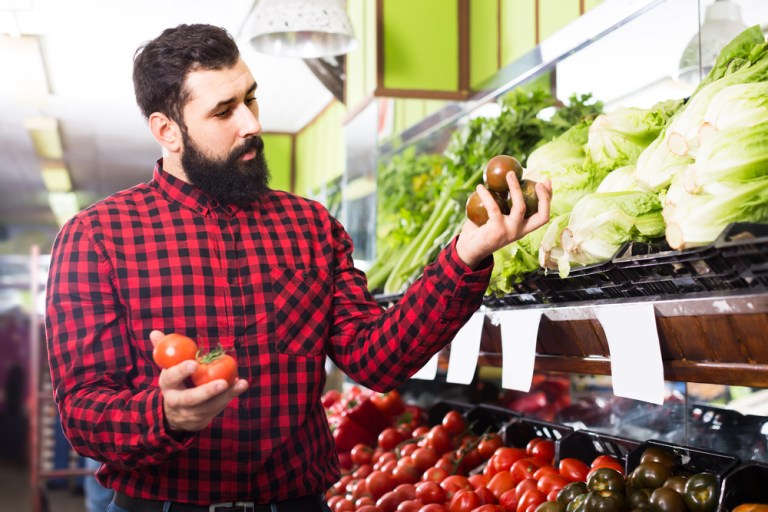Bezos Vs. Ma: Who’s Ahead In Grocery?

Those who prophesied the death of brick-and-mortar retail in favor of online alternatives may have been premature. Sure, merchants without an online presence are largely sinking or already sunk. But those who practice a pure eCommerce model may be in just as much trouble.
Amazon has seen it. That’s likely why, after putting brick-and-mortar bookstores like Borders out of business, it’s now building its own version of the exact same thing, and why it’s running so many pilots and experiments in the grocery space, like the Amazon Go convenience store in Seattle. It was probably also a factor in the eCommerce giant’s decision to buy the decidedly physical grocery chain Whole Foods (a deal that was finalized earlier this week).
But Amazon isn’t the first eCommerce giant to start carving out its niche in grocery. On the other side of the globe, Alibaba is doing the same thing with Hema — and it’s got a two-year head start. Could Hema foretell what U.S. customers should expect from Amazon’s Whole Foods Market? It’s certainly possible.
Hema’s 13 stores, based primarily in Shanghai and Beijing, operate on a hybrid online/offline model. Customers download the Hema app, use their mobile devices to scan product barcodes as they shop and then submit a payment from their Alipay digital wallet. Amazon would not be hard pressed to offer similar functionality at any physical retail site it may choose to operate. Both giants have staggering quantities of data on their customers that could be leveraged to personalize the shopping experience.
Hema allows shoppers to select their own fresh fish from the live seafood section and have it cooked on the spot to eat in-store or else have it delivered to their home. While Americans may not prize their fresh seafood in quite the same way, there is definitely a market for prepared foods, and it’s something that already exists at Whole Foods markets, so it wouldn’t be too much of a stretch to extend delivery capabilities if Amazon chose to go that route.
Finally, Hema doubles as a warehouse for local deliveries so customers can receive online orders in record time. That’s a functionality Amazon also offers with its Prime Now program, which offers free two-hour delivery. It certainly could facilitate more of these faster deliveries to a greater swath of the population if Amazon dedicated some space within each of its 460 new brick-and-mortar locations to warehousing commonly ordered goods.
Both Amazon’s Jeff Bezos and Hema’s Jack Ma are looking at very fierce — yet very different — competition.
Walmart has pressed Amazon into physical retail. Despite the American eCommerce giant’s size, Walmart’s total revenue is about three times greater, so if Amazon truly wants to be number one, it can’t afford to operate online only.
For Alibaba, the toughest competition is online; no physical retailer in the country could even be called “competition.” Yet the overall Chinese economy is slowing, and the odds of survival for a pure eCommerce player — even one as big as Alibaba with its innovative Alipay digital wallet — are no guarantee.
Though their reasons may differ, Jeff Bezos and Jack Ma’s strategies have looked distinctly similar up until now and that’s likely to remain true as both endeavor to stay a step ahead.
In Other News…
It’s no wonder Jeff Bezos is concerned about grocery. Walmart saw 73 percent year-over-year growth in Q2, and grocery accounted for more than a quarter of the company’s Q2 eCommerce sales. Click-and-collect doubled in size over the past year, making it the company’s fastest-growing online segment.
Walmart is also expanding its grocery delivery service test so that customers who buy groceries online can book an UberRUSH to have the order delivered. Delivery costs an extra $9.95, and the minimum order price is $30.
U.K. online supermarket Ocado became the first in the country to launch an app that lets shoppers add items to their grocery cart using Amazon’s Alexa voice assistant. The voice interface requires customers to say two different brand names (Alexa and Ocado) to amend their carts, and they can only add items to their list, not start a new one from scratch. But, hey, you’ve got to start somewhere.
German discount grocer Lidl has been a driving force behind dropping prices in the grocery war. But it turns out that, thanks to competition from chains like Tesco and Asda, Lidl shoppers in Britain are saving even more than those in the grocer’s country of origin. Hardly seems fair, does it?
In delivery news, Instacart has expanded same-day grocery delivery service to another half million customers in the San Francisco Bay Area as well as to university students in the Charlottesville area; Target is jumping on the grocery delivery bandwagon and AmazonFresh grocery delivery will now be available to business customers participating in the eTailer’s free Amazon Business program.